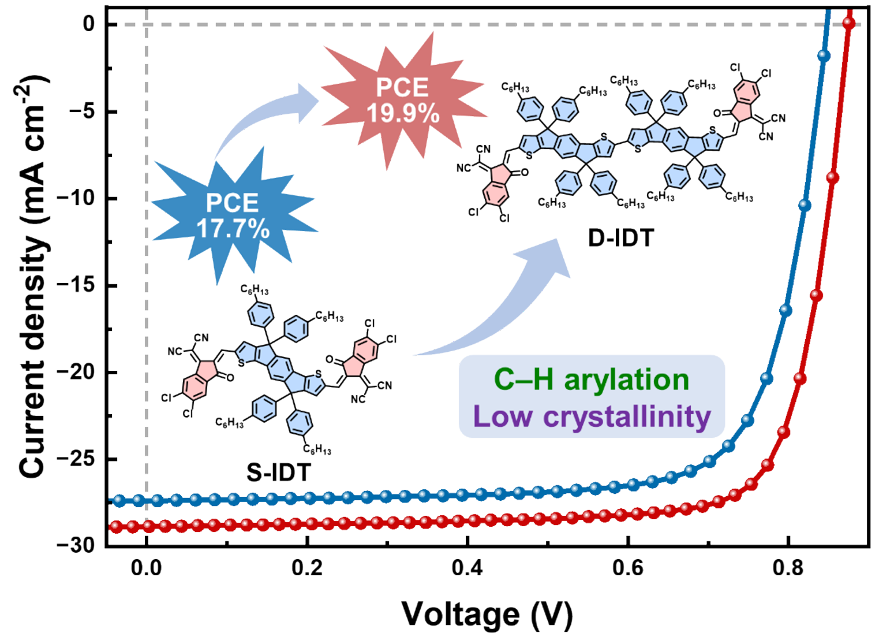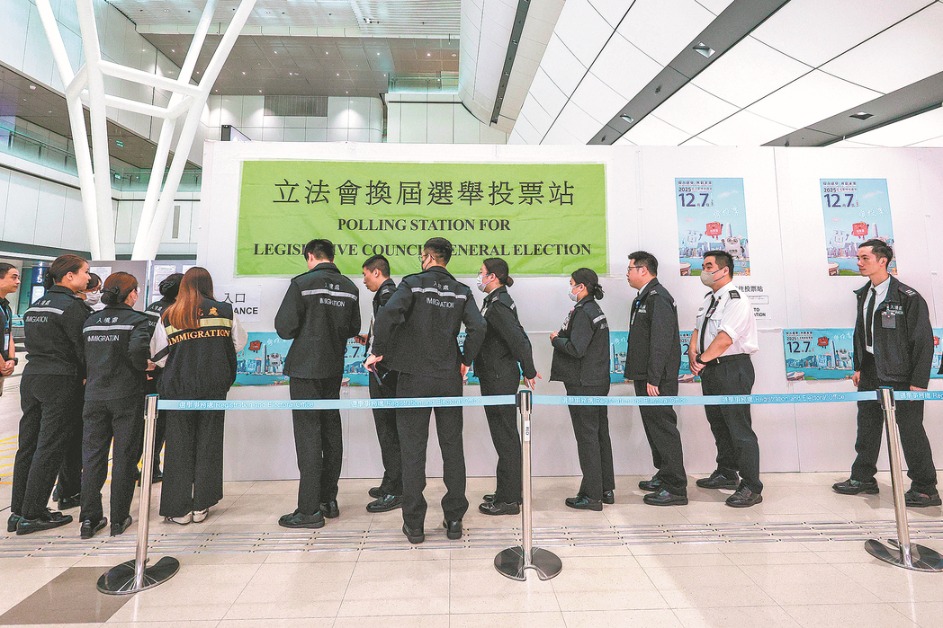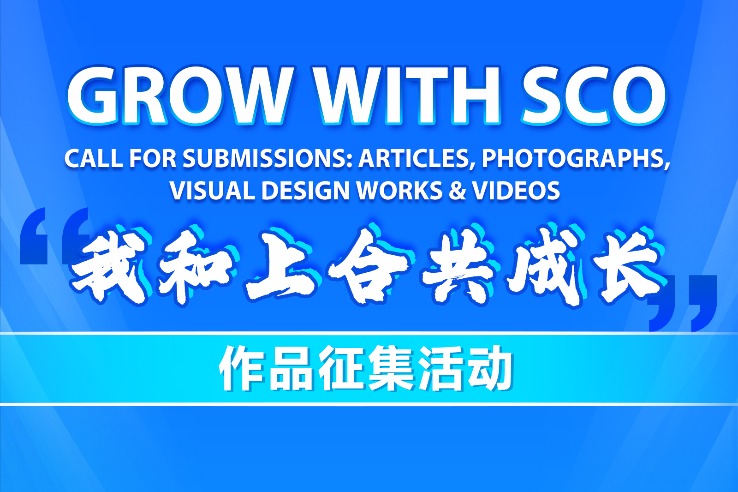Novel low crystallinity guest acceptor boosts efficiency of organic solar cells
chinadaily.com.cn | Updated: 2025-03-28 21:55

A research group led by Prof. Ge Ziyi at the Ningbo Institute of Materials Technology and Engineering (NIMTE) of the Chinese Academy of Sciences (CAS), has developed a low-crystallinity guest acceptor D-IDT via tin-free direct C–H activation as a third component of the binary organic solar cells (OSCs), achieving a highly stable OSC with the power conversion efficiency (PCE) up to 19.92 percent.
This work was published in Energy & Environmental Science.
Thanks to their light weight, good mechanical flexibility, and translucency, OSCs have attracted great attention in the organic electronic device field. Currently, organic photovoltaic materials for OSCs are typically synthesized via Stille coupling reaction, which suffers from drawbacks such as complex procedures, limited cost-effectiveness, and environmental concerns. Therefore, low-cost and eco-friendly methods for synthesizing organic photovoltaic materials are urgently needed.
Incorporating a third component, i.e., guest component, into OSCs brings significant benefits, including expanding absorption spectra, refining blend morphology, and minimizing voltage losses. Despite the numerous guest acceptors reported to date, molecular design guidelines for high-performance guest components remain scarce.
The researchers at NIMTE designed and synthesized an A-D-D-A type guest acceptor, D-IDT, via direct C-H activation. To simplify synthesis steps, a C-H/C-H cross-coupling strategy was employed, achieving an impressive yield of 84 percent.
When introduced into the classical D18:BTP-eC9 host system, D-IDT exhibited superior π-conjugation but significantly weaker intermolecular interactions compared to the A-D-A type guest acceptor S-IDT.
The low crystallinity endows D-IDT with exceptional miscibility with the host acceptor BTP-eC9. This accelerates the aggregation of BTP-eC9, facilitating efficient exciton dissociation and charge transport. Due to the introduction of D-IDT, the voltage loss of the ternary device has significantly reduced, 18 mV lower than the binary system.
The D-IDT-treated ternary device achieved an impressive PCE of 19.92 percent, outperforming devices based on S-IDT of 17.66 percent. This is the highest value reported to date for OSCs based on the D18:BTP-eC9 host system.
Under continuous illumination for 200 hours, the D-IDT-treated OSCs can almost maintain their initial efficiency, decreasing by only 8 percent, which indicates their excellent long-term stability.
This work, for the first time, demonstrated that low-crystallinity guest acceptors can effectively control crystallization kinetics, enabling precise tuning of the host acceptor's assembly behavior. It provides valuable insights for designing efficient third components via green and facile methods, advancing OSC technology closer to popular use.
























